Let's bake Easter birds from sweet yeast dough! They look amazing on the festive table and taste just as good.
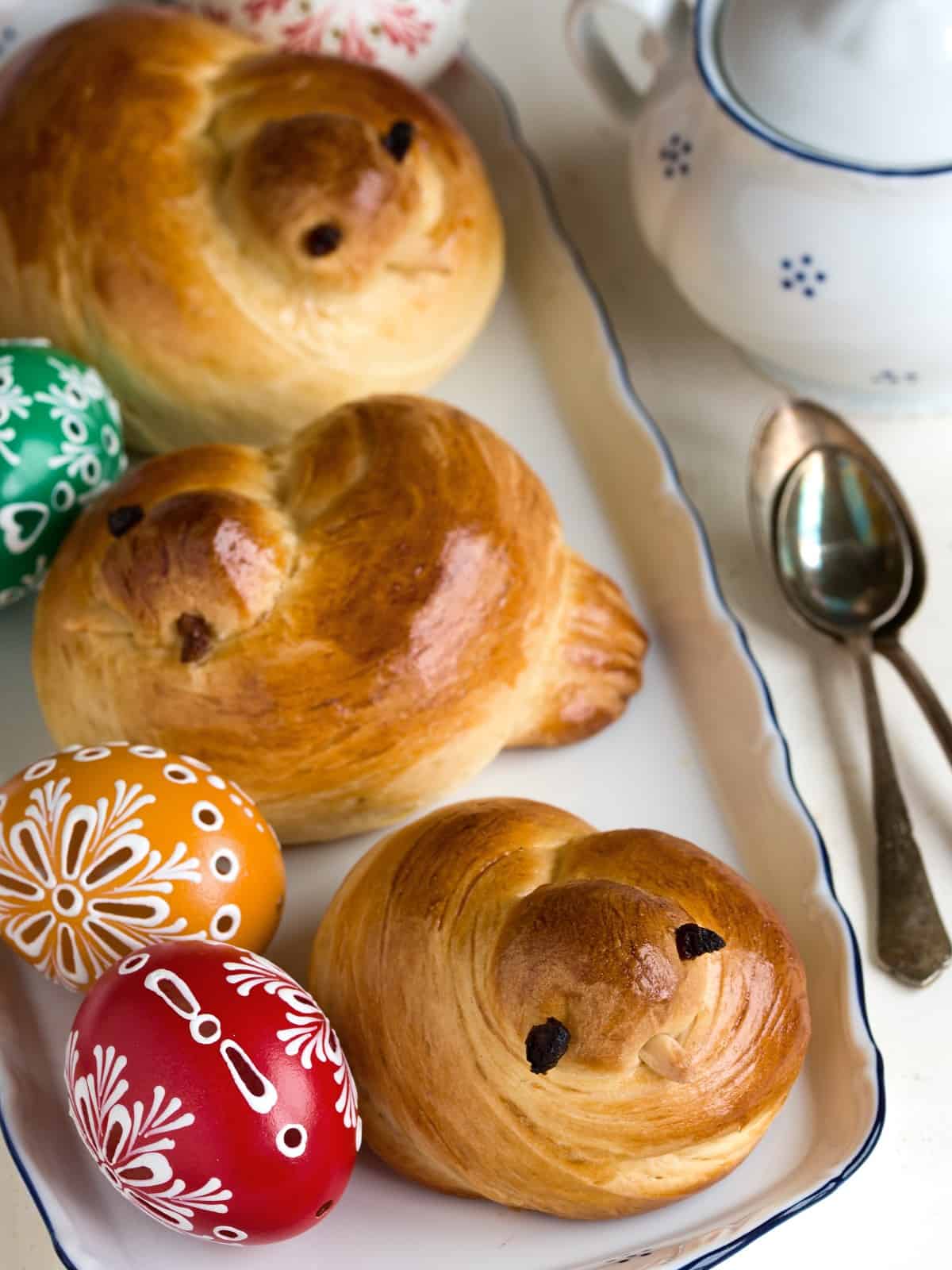
This is a Czech recipe that, in many ways, resembles jidase (judas), another type of pastry that the Czechs bake at Easter.
Because the birds are made with heavy, buttery yeast dough, reserve enough time for the dough to rise.
MY TIP: Try also mazanec, sweet Czech Easter bread!
➜ Ingredients
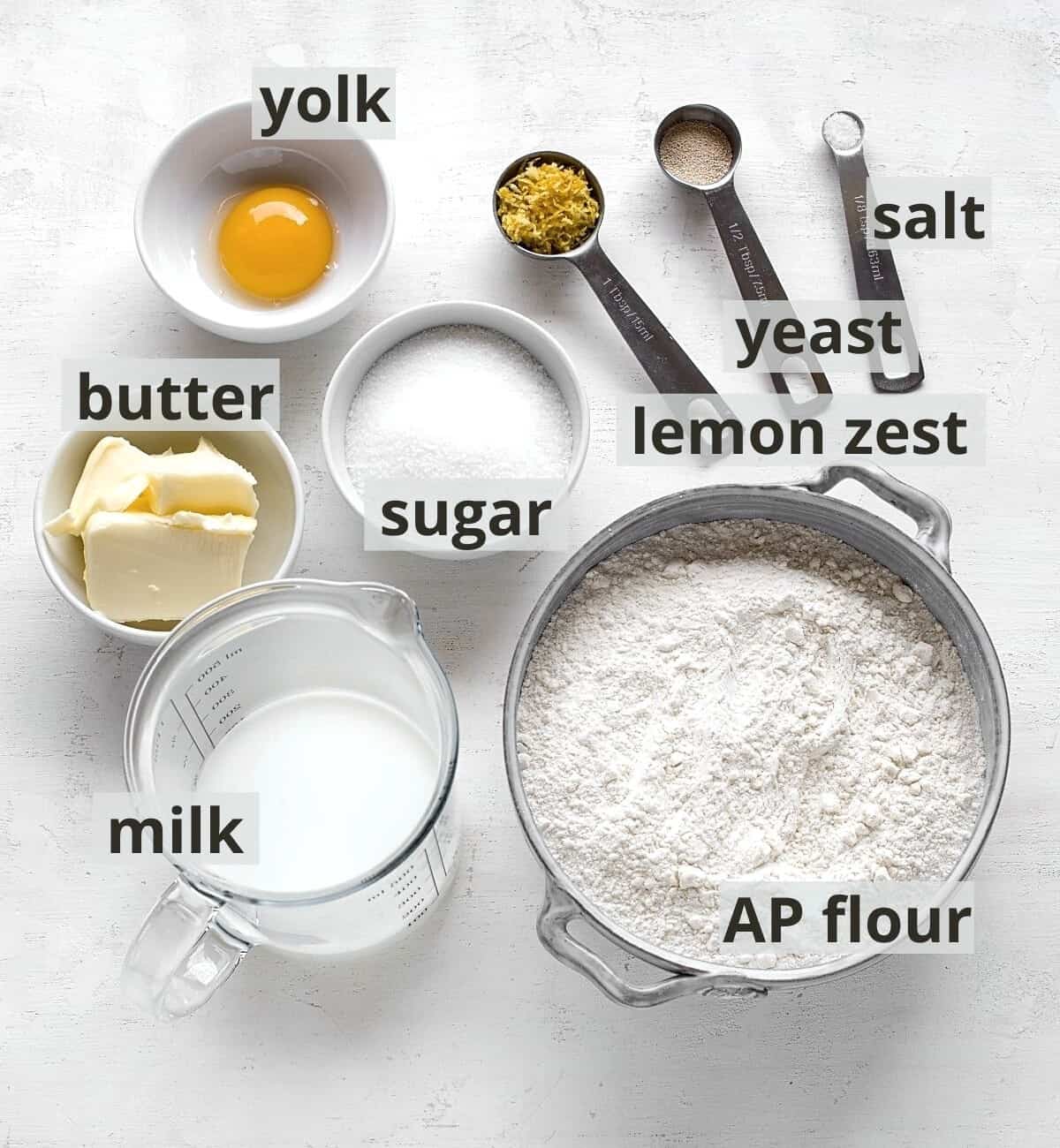
What you need to make Easter birds:
- All-purpose flour; plain flour in the UK
- Active dry yeast
- Granulated sugar; to sweeten the dough and a teaspoon to activate the yeast
- Milk; lukewarm
- Unsalted butter; softened at room temperature. Take the butter out of the fridge for at least an hour before you start making the yeast dough.
- Egg yolk; reserve the leftover egg white for later to brush the birds
- Salt; for contrast in flavor
- Lemon zest; freshly grated on a hand grating box. Use an organic lemon or scrub a regular lemon before grating under warm water.
You also need: Small raisins for the bird's eyes and slices of almond for the bird's beak.
✅ You’ll find the exact amount of ingredients below in the recipe card, which you can also print out.
➜ Instructions with photos
STEP 1: Stir the active dry yeast and a teaspoon of granulated sugar into the lukewarm milk. Leave in a warm place for about 10-15 minutes until a bubbly foam appears on the surface of the milk.
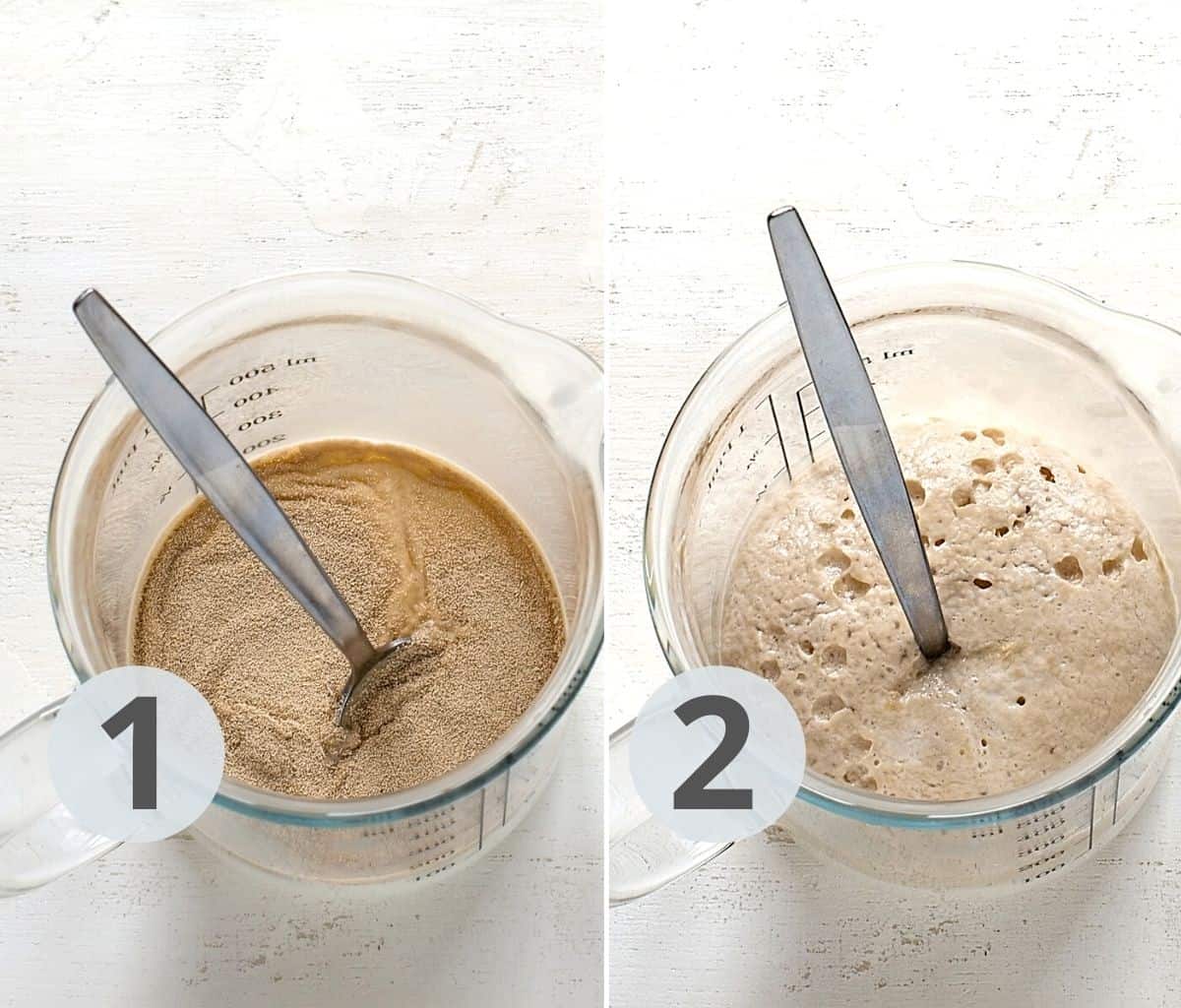
STEP 2: Heat the butter in the microwave for 30 seconds. It cannot be hot, just melted. Put the flour mixed with salt into a large mixing bowl. Add the egg yolk, the rest of the sugar, grated lemon zest, and melted butter. Pour in the milk mixture with activated yeast.
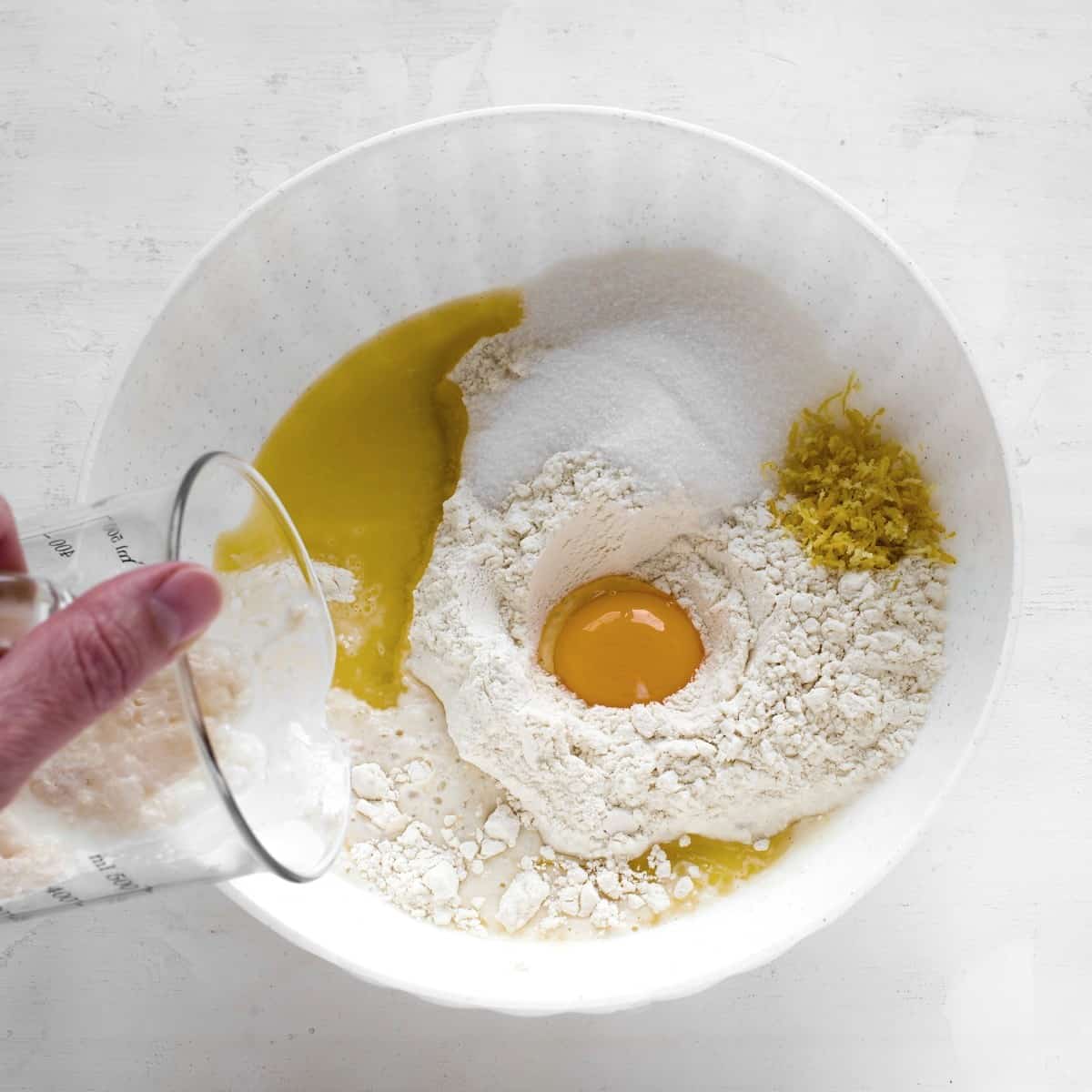
STEP 3: Making the dough: First, roughly mix all the ingredients in the bowl with a fork. Then dump the mixture onto a work surface, with a small handful of flour on the side. Process the dough with your hands and knead very thoroughly until smooth and elastic. It takes about five minutes; expect some physical labor! If the dough is too sticky, dip it a little in flour and work it in.
STEP 4: Return the dough to the bowl, cover it with plastic wrap, and put it in a warm place to rise for about 1½ hours. The dough should nearly double in volume.
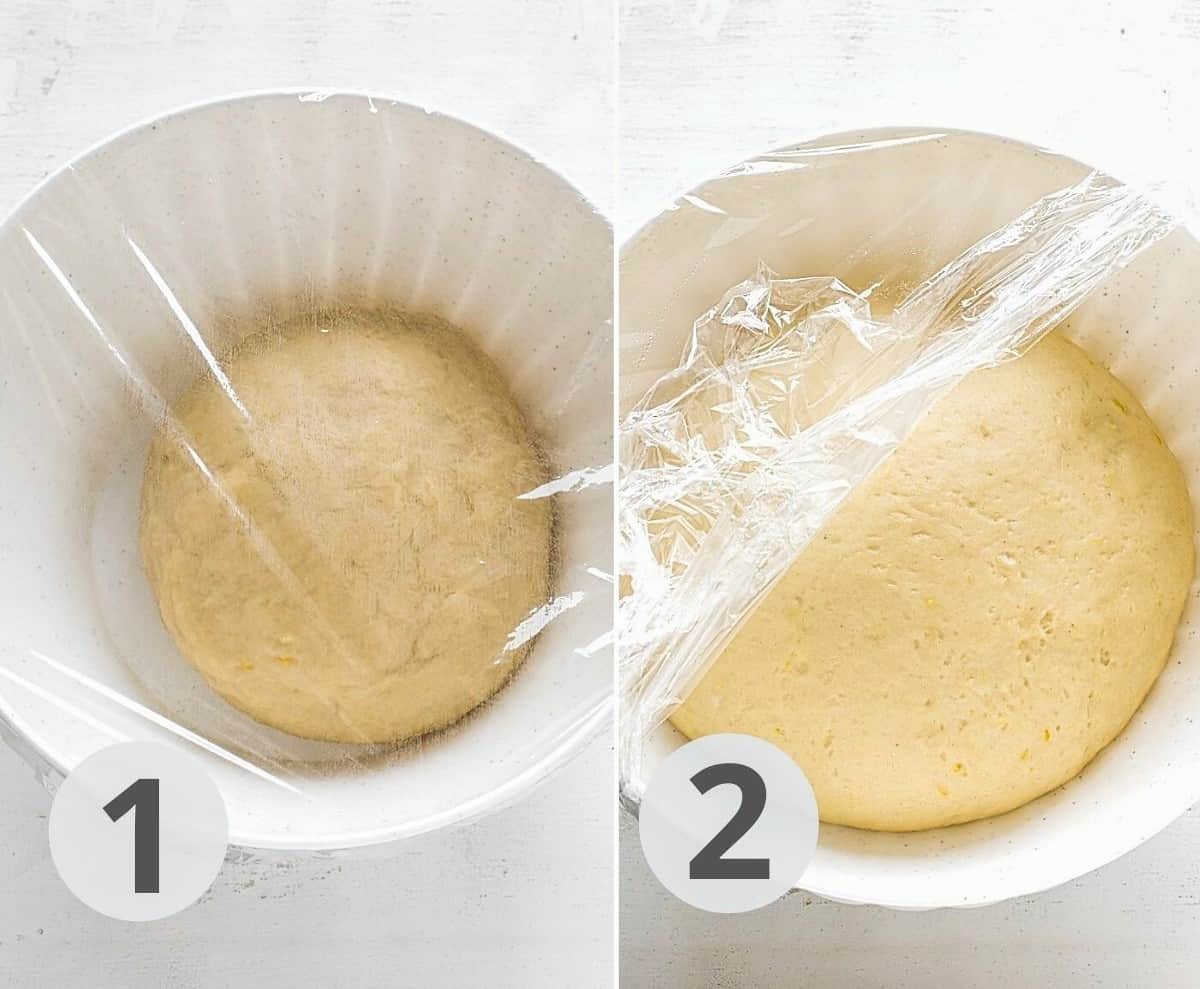
⇢ Learn how to make yeast dough rise in oven
STEP 5: Knead the dough briefly with your hands and divide it into six equal parts. Roll each piece into a strand about one inch (2.5 cm) thick and about nine to ten inches (22–25 cm) long.
STEP 6: Make a knot from the strand: Place one end of the strand over the center and create an opening. Push the same end through the hole so that a bit of the end sticks out. This end will form the tail of the bird. Turn the knot over; the other end will create the head of the bird.
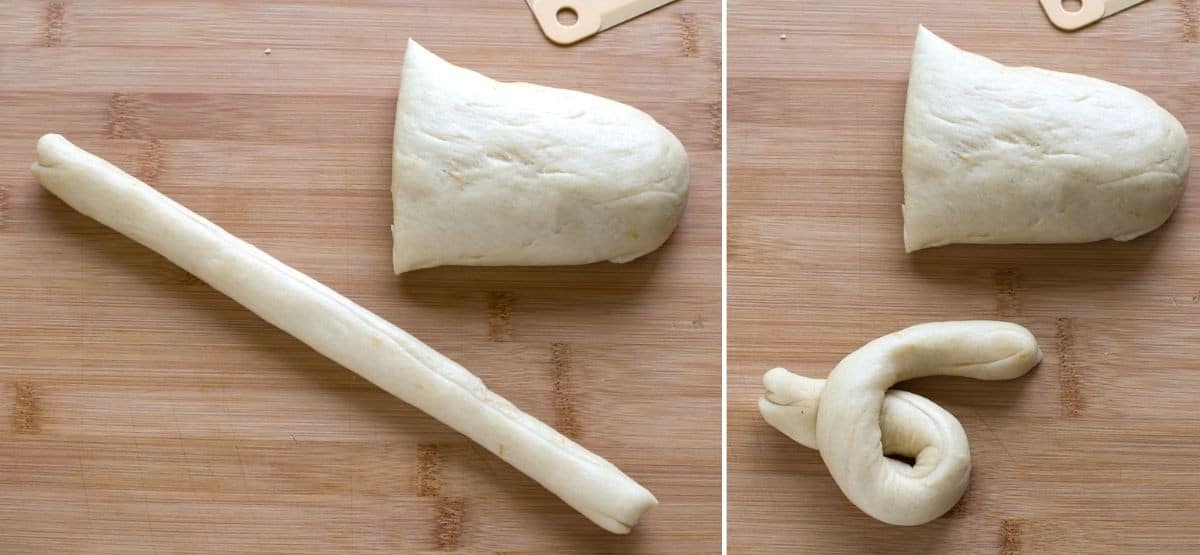
STEP 7: Now we have a knot (the bird's body) laid head side up on the work surface. Use the tines of a fork to flatten the tail; at the same time, make decorative notches in the tail.
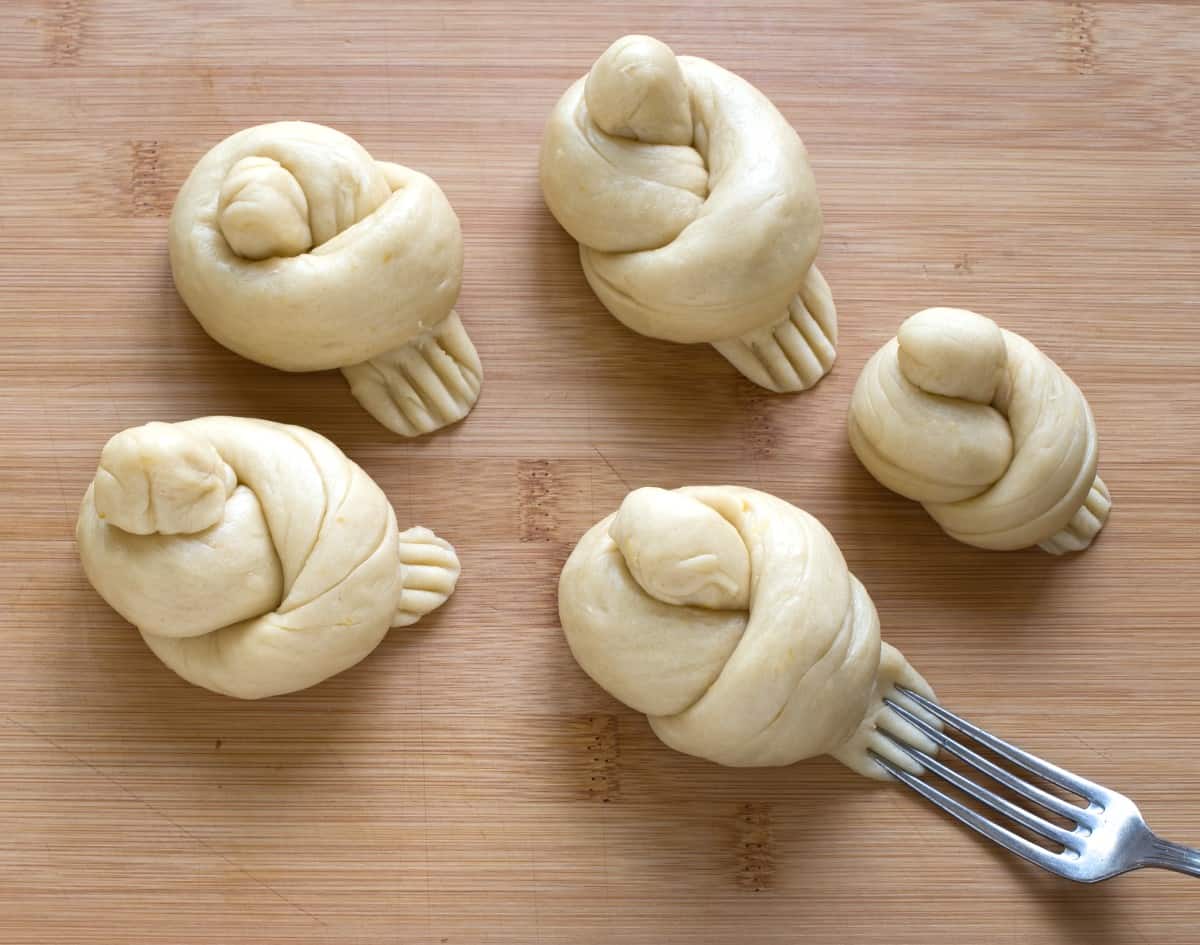
STEP 8: Carefully transfer the birds to a baking sheet lined with parchment paper. Stick two small raisins to the sides of the head like the eyes. Press them firmly; the dough tends to push the raisins out as it rises. At the spot where the head touches the body, stick a small piece of almond deeply to form a beak.
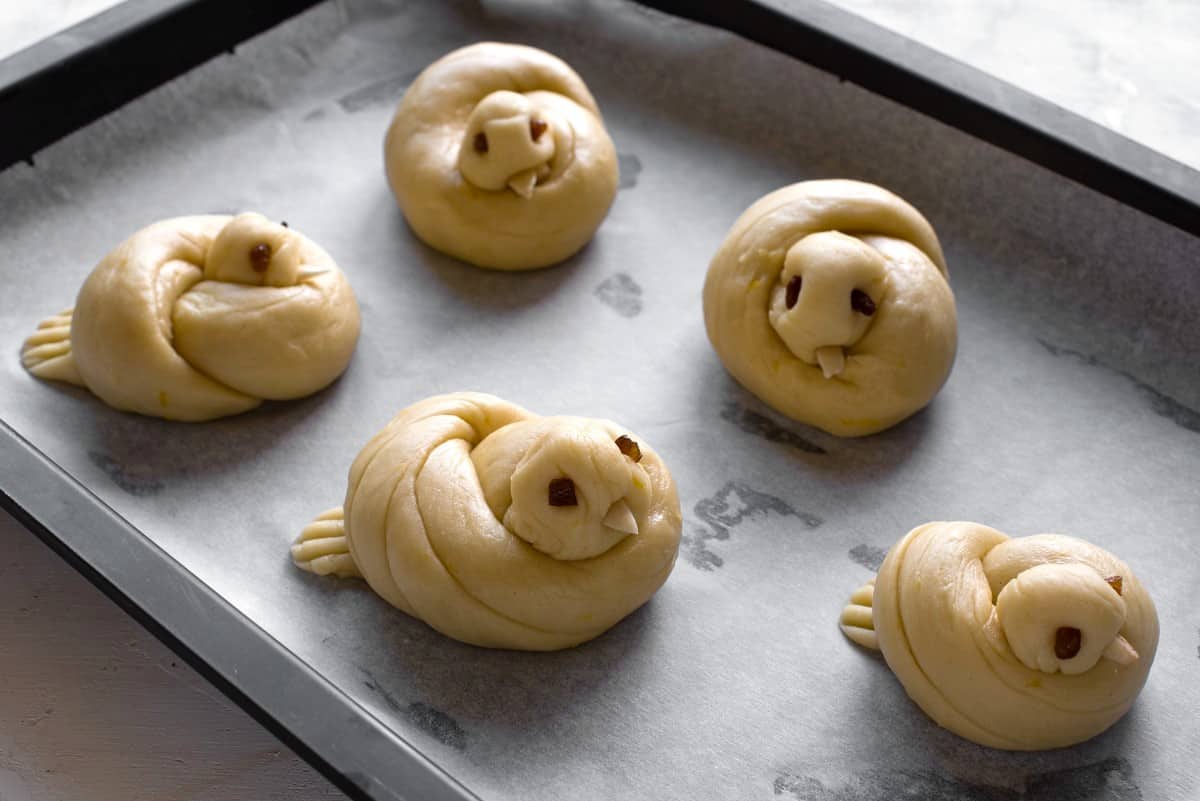
STEP 9: Cover the birds with a clean tea towel and let them rise a second time in the warmth for another hour. If the strands of dough have deformed while shaping the bird, these will form a smoother shape after the second rise.
STEP 10: Preheat the oven to 338°F (170°C) and set it to upper and lower heat. Brush the bird thoroughly with the egg white leftover from making the dough. Bake the birds for 15 minutes.
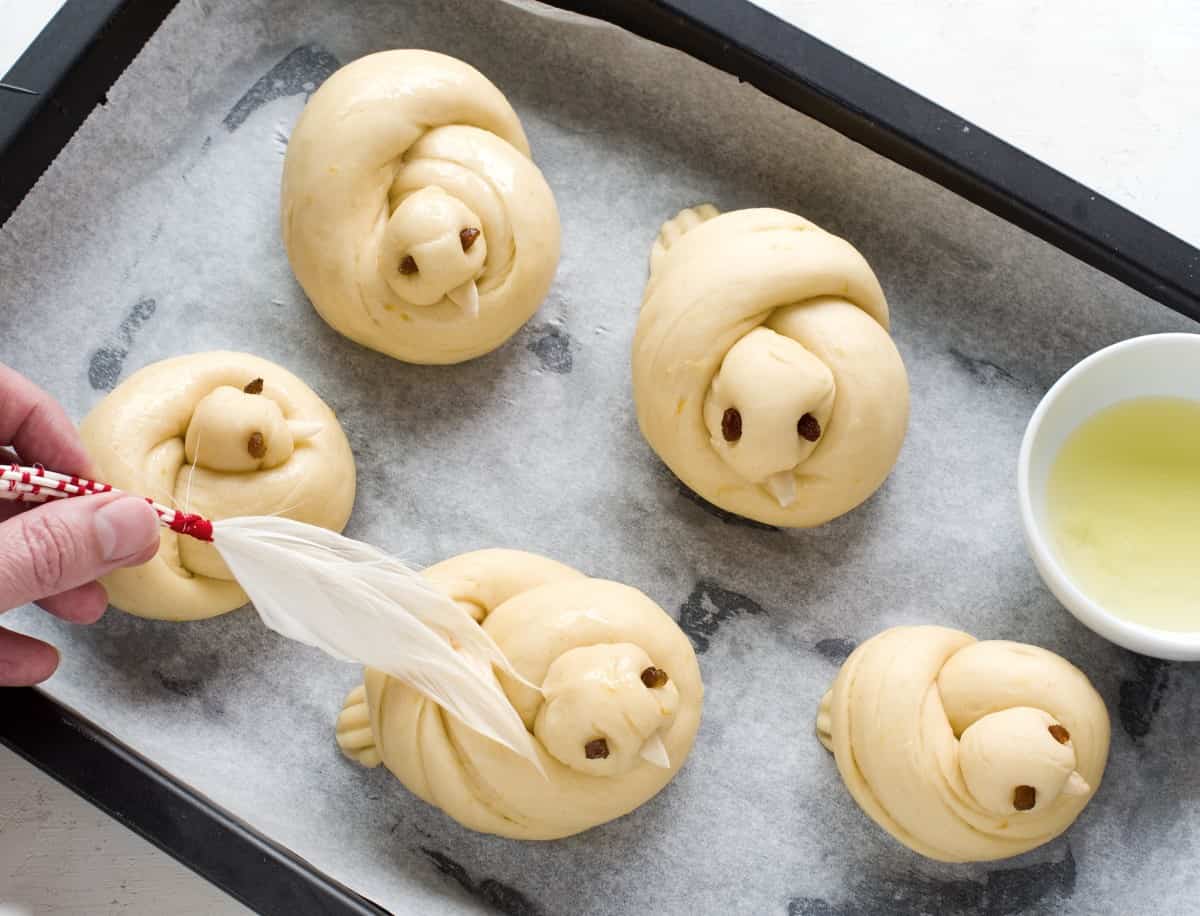
➜ Serving
Czechs bake the birds the day before Easter Monday, the most important day of Czech Easter. Arrange the baked birds on a festive platter and place it on the Easter table.
➜ Storage
Easter birds are beautifully soft and springy on the day of baking. They will keep for about five days at room temperature. Once cooled, place them in a plastic bag or airtight container.
Remember that the yeast dough birds will lose a little of their elasticity and become stiffer with each passing day.
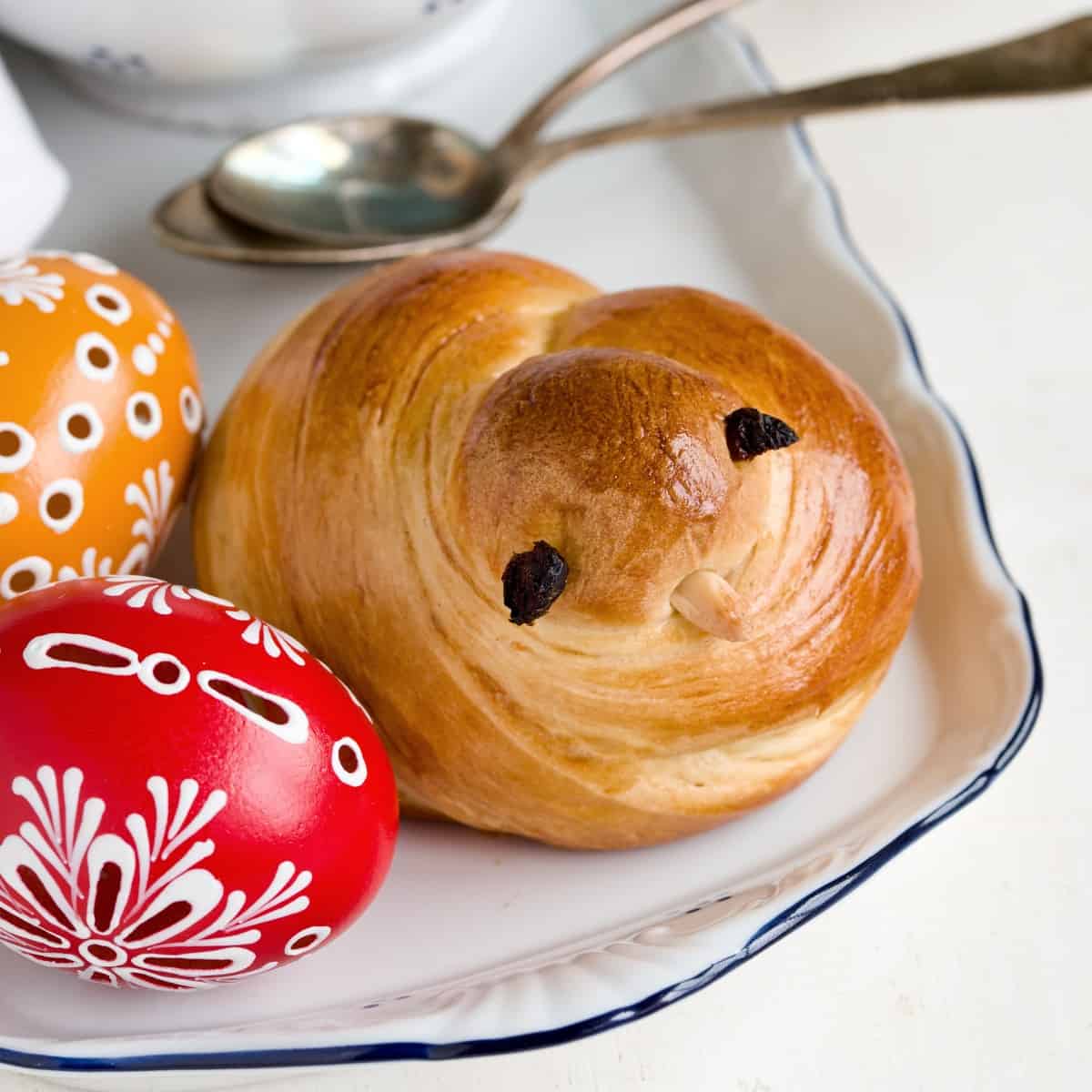
Read about Czech Easter traditions
➜ Useful tips
- Sometimes, raisins fall out of the bird's head during baking. If this happens to you, at the end of baking, carefully brush the raisin holes with egg white (some leftovers from the egg brush) and reinsert the raisins where they fell out. Place briefly in the oven; the egg white will glue the raisins to the dough.
- Don't underestimate the rising time of the dough. The dough itself rises first, then the shaped birds. In both cases, enough time is needed for the birds to hold their shape when baked.
- Forming a knot (bird's body) requires a little practice. Try tying the strand of dough a few times until you get a result you're happy with. Even if the bird isn't in perfect shape in the end, it will always taste wonderful!
More Easter recipes:
Tried this recipe?
Leave a review down in the comments! ⭐⭐⭐⭐⭐
Follow me on Facebook and Pinterest. Subscribe to my newsletter. Send me any question about Czech cuisine to my e-mail. I love hearing your feedback!
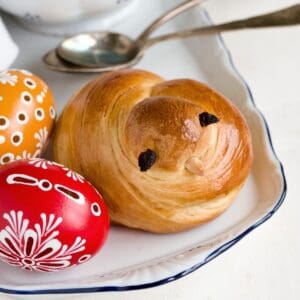
Baked Easter Birds
Ingredients
- 2 cups all-purpose flour (260 g) plus a small handful to flour the work surface
- 1 and ½ teaspoon active dry yeast
- ⅓ cup granulated sugar (70 g)
- ½ stick unsalted butter (60 g)
- ½ cup milk (120 ml) lukewarm
- 1 egg yolk
- 1 Tablespoon lemon zest freshly grated (of about one small lemon)
- 1 pinch salt
Misc.:
- 1 egg white for egg brush
- 12 small raisins for bird's eyes
- 6 almonds for bird's beak
Instructions
- Stir the active dry yeast and a teaspoon of granulated sugar into the lukewarm milk. Leave in a warm place for about 10-15 minutes until a bubbly foam appears on the surface of the milk.
- Heat the butter in the microwave for 30 seconds. It cannot be hot, just melted. Put the flour mixed with salt into a large mixing bowl. Add the egg yolk, the rest of the sugar, grated lemon zest, and melted butter. Pour in the milk mixture with activated yeast.
- Make the dough: First, roughly mix all the ingredients in the bowl with a fork. Then dump the mixture onto a work surface, with a small handful of flour on the side. Process the dough with your hands and knead very thoroughly until smooth and elastic. It takes about five minutes; expect some physical labor! If the dough is too sticky, dip it a little in flour and work it in.
- Return the dough to the bowl, cover it with plastic wrap, and put it in a warm place to rise for about 1½ hours. The dough should nearly double in volume.
- Knead the dough briefly with your hands and divide it into six equal parts. Roll each piece into a strand about one inch (2.5 cm) thick, about nine to ten inches (22-25 cm) long.
- Make a knot from the strand: Place one end of the strand over the center and create an opening. Push the same end through the hole so that a bit of the end sticks out. This end will form the tail of the bird. Turn the knot over; the other end will create the head of the bird.
- Now we have a knot (the bird's body) laid head side up on the work surface. Use the tines of a fork to flatten the tail; at the same time, make decorative notches in the tail.
- Carefully transfer the birds to a baking sheet lined with parchment paper. Stick two small raisins to the sides of the head like the eyes. Press them firmly; the dough tends to push the raisins out as it rises. At the spot where the head touches the body, stick a small piece of almond deeply to form a beak.
- Cover the birds with a clean tea towel and let them rise for a second time in the warmth for another hour. If the strands of dough have deformed while shaping the bird, these will form into a smoother shape after the second rise.
- Preheat the oven to 350°F (177°C) and set it to upper and lower heat. Brush the bird thoroughly with the egg white leftover from making the dough. Bake the birds for 15 minutes.
Notes
- Makes 6 Easter birds.
- SERVING: Czechs bake the birds the day before Easter Monday, the most important day of the Czech Easter. Arrange the baked birds on a festive platter and place it on the Easter table.
- STORAGE: Easter birds are beautifully soft and springy on the day of baking. They will keep for about five days at room temperature. Once cooled, place them in a plastic bag or airtight container.
- Sometimes, raisins fall out of the bird's head during baking. If this happens to you, at the end of baking, carefully brush the raisin holes with egg white (some leftover from the egg brush) and reinsert the raisins where they fell out. Place briefly in the oven; the egg white will glue the raisins to the dough.
- Forming a knot requires a little practice. Try tying the strand of dough a few times until you get a result you're happy with. Even if the bird isn't the perfect shape after baking, it will always taste wonderful!
DISCLAIMER: Because I come from Central Europe, my recipes are based on metric units such as grams or milliliters. Check out how I convert metric units to the U.S. system:
Conversion chart

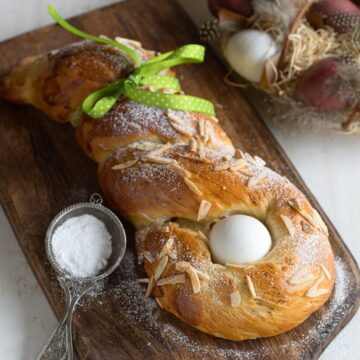
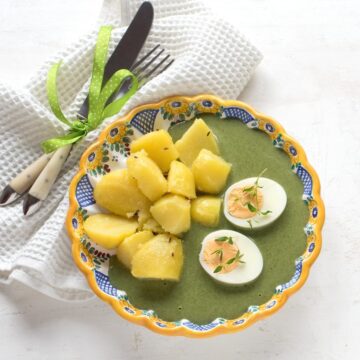
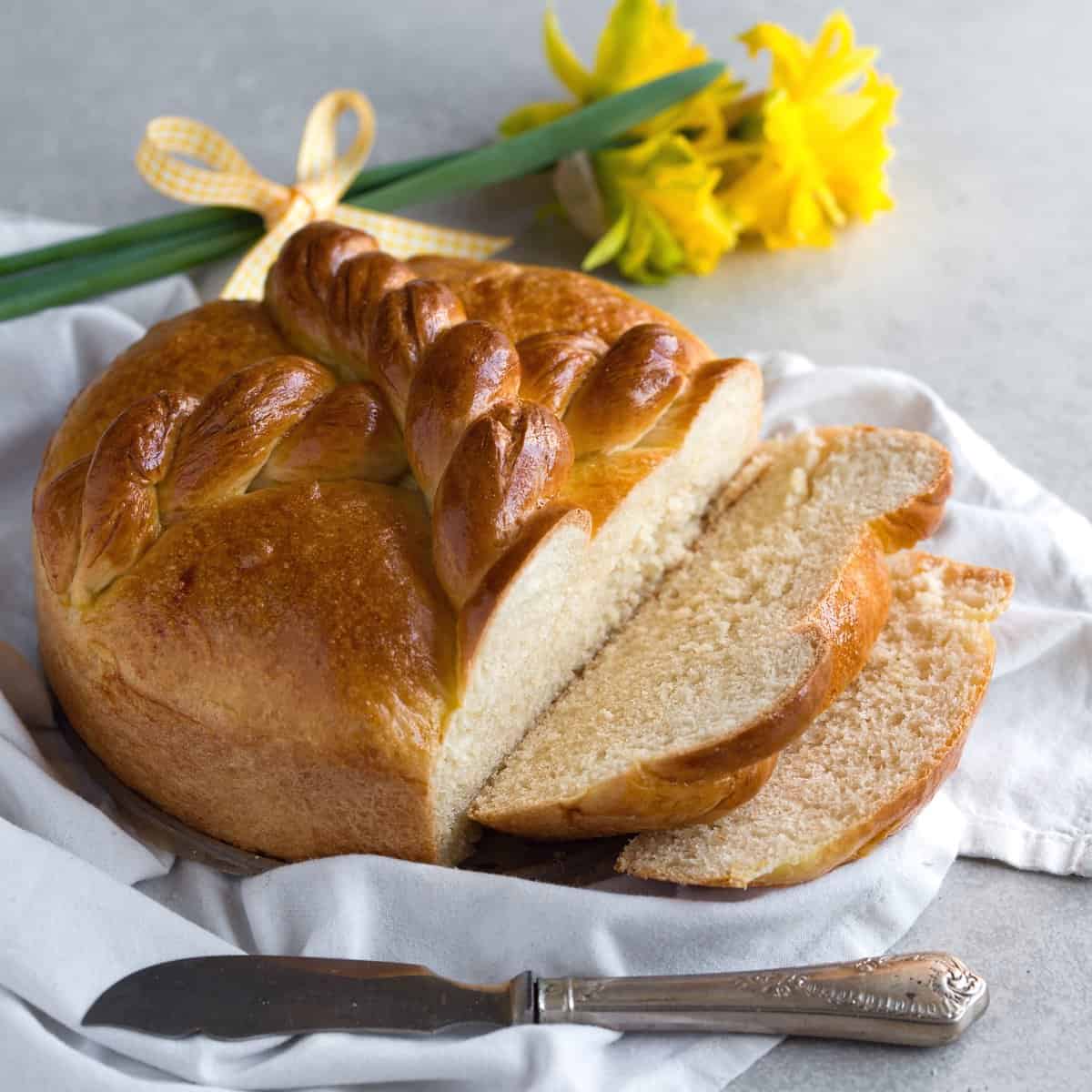
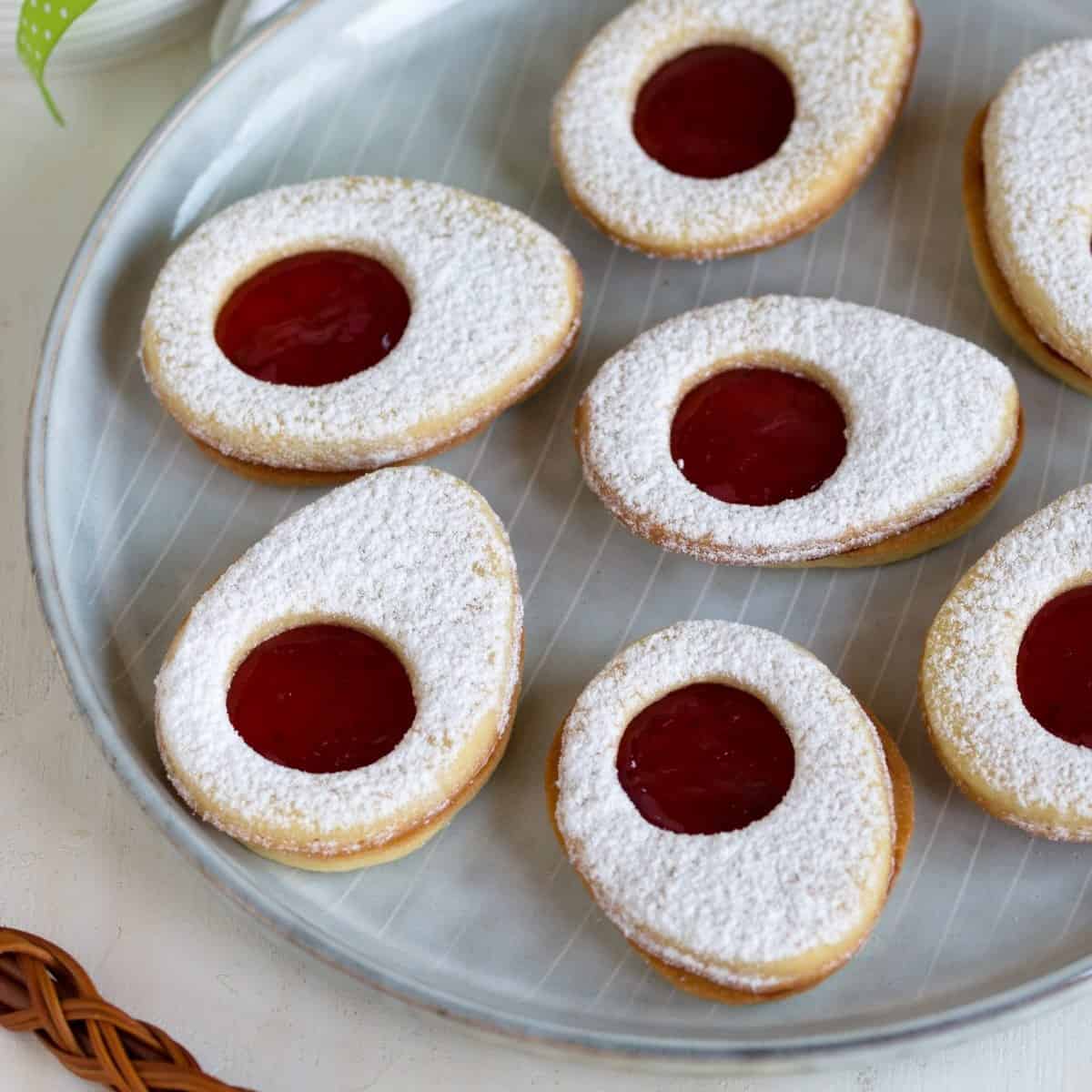
tracy harrington
Made these this morning and skipped the raisins and beak since i did not have raisins or almonds but just made knots. They look fantastic! Easy recipe and worked perfectly.
Thanks
Petra Kupská
Thank you for your kind comment and lovely feedback. The knots look good too, and even better when you've enjoyed them! Happy to hear that 🙂
Alexandra
I wanted to try the recipe before Easter so I made some today. My boyfriend said they tasted like Heaven. One question: Can I make the dough ahead? keeping it in the fridge until I need it? that would be great.
Petra Kupská
Thanks a lot, Alexandra, for your kind comment! I'm really glad to hear that the Mazanec bread was a success with your friend. When it comes to yeast dough, it shouldn't be allowed to overproof. You can slow down the proofing process by placing the dough in a cold environment, typically in the fridge. If you don't have time to bake the dough the same day you make it, you can let it rise in the fridge overnight and bake it the following morning. Unfortunately, I don't have experience with how long the dough can proof in the fridge, but one night usually is not a problem.